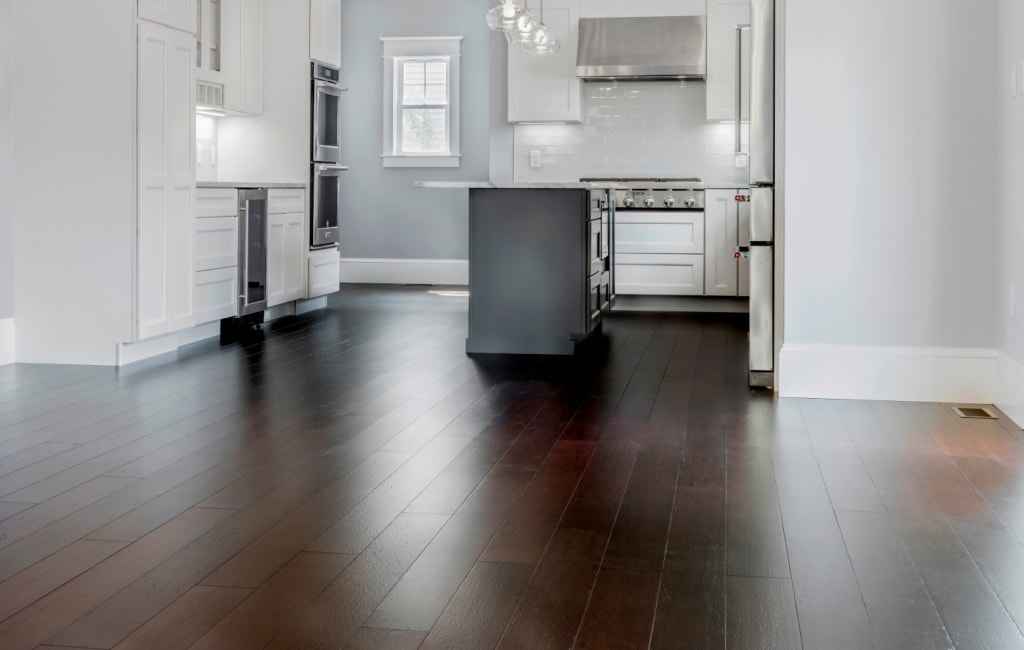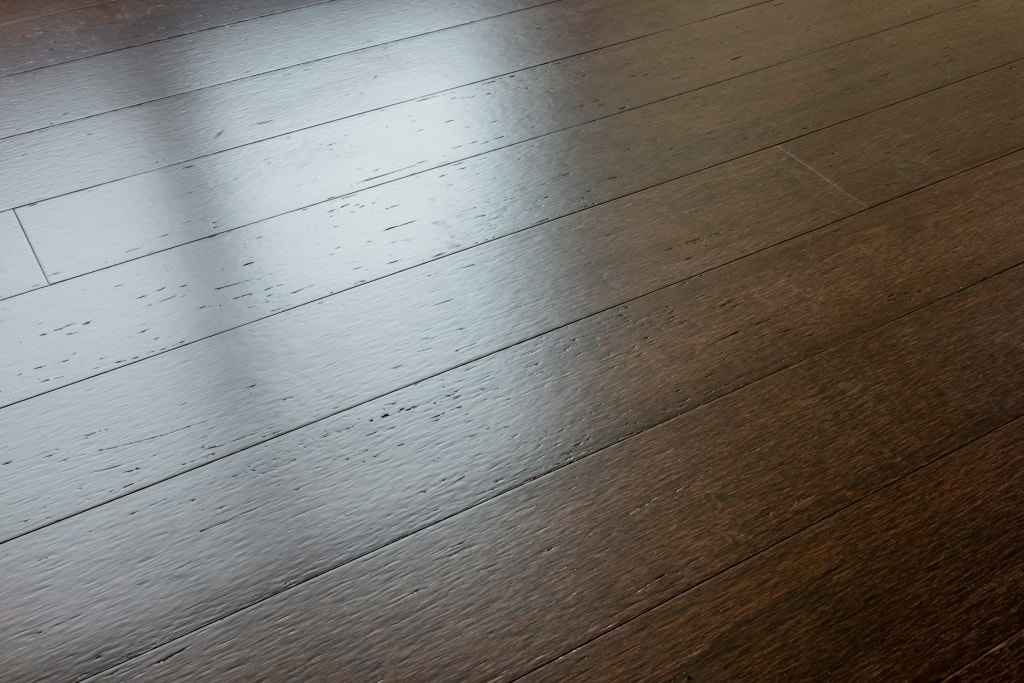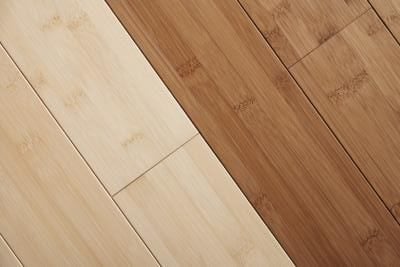Are you thinking of getting bamboo flooring for your new house? Are you going to be trying it for the very first time? When it comes to flooring, hardwood, and tiled floors are the frequent choices that come to our minds. Even amongst wood flooring most people often only know about traditional hardwoods yet there is a plethora of flooring options out there!
Is there an alternative to hardwood you may ask?
There surely is, bamboo flooring!
Bamboo flooring is similar to regular hardwood. However, it also has some benefits that make it the better choice. They have been popularly used in South Asian households for centuries, and make a very sturdy, long-lasting, and eco-friendly floor.

When choosing bamboo flooring, it is necessary to understand the characteristics that make it an efficient flooring material. Along with this, one must also consider the fact that it is fairly expensive and needs proper maintenance.
We have enlisted the advantages and disadvantages of using bamboo for your floors to make it easier for you.
Check them out!
Pros of Bamboo Flooring
-
Environment friendly
Traditional hardwood floors are made from wood harvested from red and white oaks, rock maple, and hickory. These trees take around 20-120 years to mature before harvesting is possible.
On the other hand, bamboo is a highly renewable and eco-friendly material. Since it qualifies as grass, it grows and matures fasters than most hardwood-supplying trees. Bamboos take up to 5-7 years to mature and can be harvested without any need to replant the root system.
Bamboo does not require extensive farming methods, fertilizers, irrigation, and pesticides. Moreover, it can take almost three fourth more carbon per year than hardwood forests, reducing the carbon footprint.

-
Natural material
Due to the increase in housing equipment and material, ecological problems are also on the rise. Bamboo is a natural and brilliant alternative to materials such as concrete and metal. The Moso species of bamboo is almost always used for flooring, which is different from those species that herbivores like pandas eat. This also keeps the ecosystem intact.
-
Pest resistant
Bamboo naturally has few pests, and its natural immunity repels insects. Thus, bamboo is not brought under the influence of pesticides and keeps the residences safe from termites and bugs.
-
Easy maintenance
Bamboo floors can be easily maintained by simple cleaning techniques. Sweeping and vacuuming regularly can remove dust and particle debris stuck in the gaps between planks.
Occasionally mopping the floor with a mild soap solution can make it look cleaner. However, it is necessary to make sure that the excessive water is squeezed away from the mop. Non-wax, non-alkaline bamboo floor cleansers are also a great option for longer-lasting glosses.
-
Light on the pockets
Due to different farming techniques and easy availability, bamboo flooring is more affordable than hardwood floors. You would have to spare around $6-$15 per square foot of flooring. However, bargaining, in this case, can end up making you spend a lot more than you originally estimated. Thus, go for a good quality bamboo that costs $3-$5 per square foot, and has a green certification.

-
Durability
In areas with high foot traffic or significant activity by children and pets, bamboo flooring has been deemed quite useful. It is naturally resistant to the abrasion caused by the long duration of footwork and the impact of fallen objects. Its compressive strength is also higher than that of concrete, making it healthier for human feet.
-
Refinishing potential
Bamboo has the tendency to get scratched and discolored, forming uneven bumps and crevices. Refinishing the top layer of the surface can bring a new even look to the floor again. The greater the thickness, the more the chances for refinishing.
Soundproofing Potential
One advantage of bamboo flooring is its potential for soundproofing. Bamboo’s natural cellular structure helps absorb sound and reduce noise transmission. While bamboo’s Sound Transmission Class (STC) rating is not often documented, it is estimated to be around 53-54, which is slightly lower than most hardwoods like oak, which generally have STC ratings between 55-571. This suggests that bamboo floors perform relatively similarly to hardwoods in terms of soundproofing. However, the sound insulation of bamboo can be further improved by employing additional soundproofing techniques. Our guide on how to soundproof hardwood floors can provide useful insights for enhancing acoustic performance.
-
Style
Bamboo flooring adds to your modern décor with its sleek finish and sophisticated look. It also suits the contemporary style of offices, hotels, and residences.
-
Variety
Strand woven bamboos are many times harder than hardwood flooring. Natural bamboo is light golden in color. To give a darker color to your floor, bamboo is carbonized. Stained bamboo can give abstract streaks to pale bamboo in a light, medium, or dark shade.
-
Climatic adaptation
Bamboo is a highly weather-resistant material. As it does not swell or contract when exposed to highly humid and arid climates respectively, its durability is better than that of hardwood. Therefore, it makes a suitable option for kitchens and laundry rooms too.
Cons of Bamboo Flooring
-
Irresponsible harvesting practices
Sometimes bamboo is sometimes harvested illegally or by irresponsible forestry practices. Conversely, dedicated farms supply safely harvested bamboo, which shows from the certification and prices. Buying bamboo planks from an FSC Certified brand can put an end to illegal harvests and save forests around the world.
-
Volatile Organic Chemical (VOC) emission – low-quality brands
Bamboo planks are created by compacting the shredded stalks of bamboo by treating them to heat, pressure, and resin-based adhesives. Low-quality brands can emit toxic and volatile organic chemicals over time. Ensure that the brand you choose meets the CARB Phase 2 standard and has Floorscore certification and you’ll have no issues.
-
The softness of “horizontal” and “vertical” bamboo floors
Strand woven bamboo flooring is the hardest wood flooring in the market, by leaps and bounds. However “horizontal” and “vertical” bamboo floors can prove to be quite soft and non-durable Such bamboo have a weakened structure and can develop scratches easily, starkly standing out from the strength and durability of mature bamboo.
-
Scratch prone like many hardwoods
Although bamboo is highly durable, its surface can be subjected to scratches and abrasions due to sharp objects and furniture, like all wood floors. However, adding felt pads to furniture and taking reasonable care will keep your bamboo looking great, and you can occasionally refinish bamboo too.
-
Unreliable grading system
There has not been an effective and reliable grading system established to rate bamboo planks yet. Dealers usually grade them into arbitrary categories, namely A and B depending upon their quality. However, you cannot compare the quality of planks from the same category. Nevertheless, you can always go for “green” standard planks certified by the government. Make sure to research the brands you’re considering on Yelp or other reviews sites, to see what others are saying.
-
Design Limitations with horizontal and vertical bamboo
While strand woven bamboo floors have an incredibly gorgeous marbling effect that is a result of the manufacturing process, and come in a wide spectrum of colors and surface styles, vertical and horizontal grain bamboo floors have a contemporary look that does not necessarily suit all interior décors. It also looks suitable solely for modern interior designs, reducing the versatility of interior design.
Conclusion
Therefore, we have ten positive effects of bamboo flooring compared to the six negatives. Although there might be some disadvantages, you can decrease most of them by responsibly choosing bamboo for your floors and maintaining them properly. With this, you can be a proud part of the green movement too.
Related Articles



